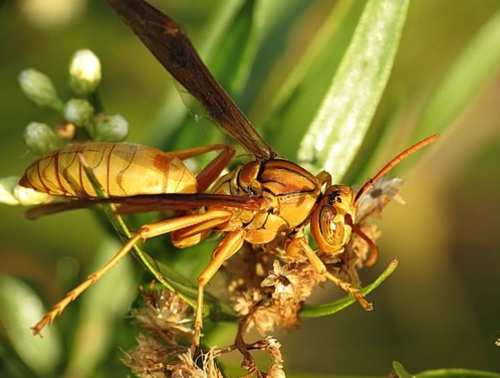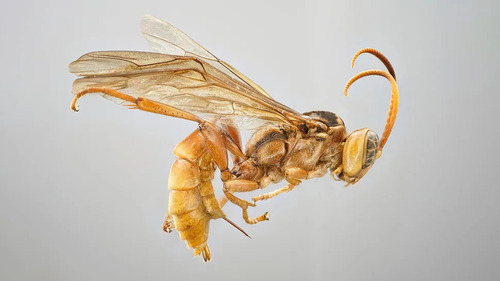In September 2023, scientists unveiled a fascinating and somewhat horrifying new species of wasp known as the vampire wasp, scientifically named Capitojoppa amazonica. This unique insect was discovered in the lush, biodiverse western Peruvian Amazon, a region known for its incredible array of wildlife.

The vampire wasp is a parasitic creature that has a rather gruesome life cycle. Unlike most wasps, which may build nests or live in colonies, the vampire wasp takes a more sinister approach to reproduction. Female vampire wasps lay their eggs one at a time inside the body of a host insect. This could be a caterpillar or another small insect. The host unknowingly becomes a temporary home for the developing larvae.
Once the egg hatches inside the host, the tiny wasp larva begins its meal—consuming the host's tissues from the inside out. This feeding process is not immediate; it can take time for the larva to grow large enough to emerge. Eventually, the larva makes its way out of the host's body, often killing it in the process. This cycle highlights the complex and often brutal interactions that occur in nature, especially in ecosystems like the Amazon.
While the vampire wasp may sound terrifying, it plays a role in the ecosystem. Parasitic wasps like this one help regulate insect populations, maintaining a balance in their environment. By controlling the numbers of certain host insects, they contribute to the health of their ecosystem, ensuring that no single species dominates.
The introduction of Capitojoppa amazonica to the scientific community is significant for several reasons. First, it expands our understanding of biodiversity in the Amazon rainforest, a critical area that faces threats from deforestation and climate change. Each new species discovered can provide insights into the complexity of these ecosystems and the importance of preserving them.
Furthermore, studying such unique species can lead to discoveries in other fields, such as medicine. Many parasitic organisms have evolved complex mechanisms that scientists can study for potential applications in health and disease control.

The vampire wasp may be one of nature's creepiest creations, but it serves as a reminder of the wonders and horrors of the natural world. Its discovery not only sheds light on the diversity of life in the Amazon but also underscores the importance of protecting these vital ecosystems. As we learn more about creatures like the vampire wasp, we gain a deeper appreciation for the intricate web of life that sustains our planet. Welcome to the jungle, indeed!
animal tags: Vampire-Wasp
We created this article in conjunction with AI technology, then made sure it was fact-checked and edited by a Animals Top editor.